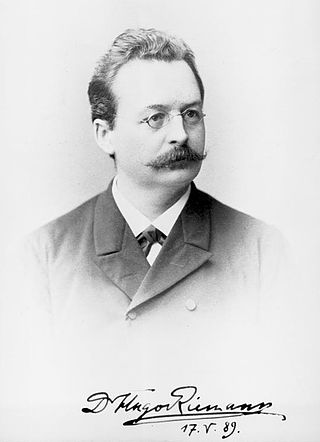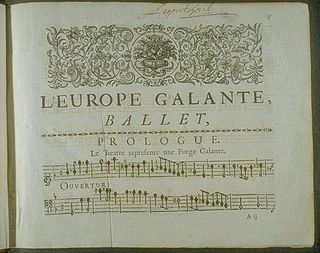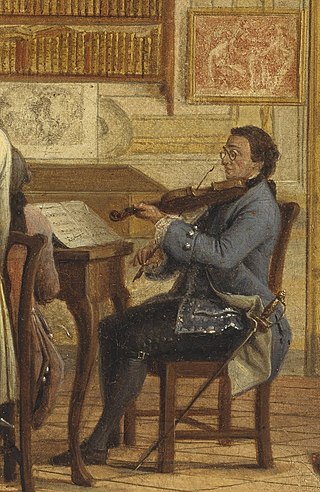
An image schema is a recurring structure within our cognitive processes which establishes patterns of understanding and reasoning. As an understudy to embodied cognition, image schemas are formed from our bodily interactions, from linguistic experience, and from historical context. The term is introduced in Mark Johnson's book The Body in the Mind; in case study 2 of George Lakoff's Women, Fire and Dangerous Things: and further explained by Todd Oakley in The Oxford handbook of cognitive linguistics; by Rudolf Arnheim in Visual Thinking; by the collection From Perception to Meaning: Image Schemas in Cognitive Linguistics edited by Beate Hampe and Joseph E. Grady.

Karl Wilhelm Julius Hugo Riemann was a German musicologist and composer who was among the founders of modern musicology. The leading European music scholar of his time, he was active and influential as both a music theorist and music historian. Many of his contributions are now termed as Riemannian theory, a variety of related ideas on many aspects of music theory.

Music can be analysed by considering a variety of its elements, or parts, individually or together. A commonly used list of the main elements includes pitch, timbre, texture, volume, duration, and form. The elements of music may be compared to the elements of art or design.

Carl Dahlhaus was a German musicologist who was among the leading postwar musicologists of the mid to late 20th-century. A prolific scholar, he had broad interests though his research focused on 19th- and 20th-century classical music, both areas in which he made significant advancements. However, he remains best known in the English-speaking world for his writings on Wagner. Dahlhaus wrote on many other composers, including Josquin, Gesualdo, Bach and Schoenberg.
In psychology and cognitive science, a schema describes a pattern of thought or behavior that organizes categories of information and the relationships among them. It can also be described as a mental structure of preconceived ideas, a framework representing some aspect of the world, or a system of organizing and perceiving new information, such as a mental schema or conceptual model. Schemata influence attention and the absorption of new knowledge: people are more likely to notice things that fit into their schema, while re-interpreting contradictions to the schema as exceptions or distorting them to fit. Schemata have a tendency to remain unchanged, even in the face of contradictory information. Schemata can help in understanding the world and the rapidly changing environment. People can organize new perceptions into schemata quickly as most situations do not require complex thought when using schema, since automatic thought is all that is required.

In music, galant refers to the style which was fashionable from the 1720s to the 1770s. This movement featured a return to simplicity and immediacy of appeal after the complexity of the late Baroque era. This meant simpler, more song-like melodies, decreased use of polyphony, short, periodic phrases, a reduced harmonic vocabulary emphasizing tonic and dominant, and a clear distinction between soloist and accompaniment. C. P. E. Bach and Daniel Gottlob Türk, who were among the most significant theorists of the late 18th century, contrasted the galant with the "learned" or "strict" styles. The German empfindsamer Stil, which seeks to express personal emotions and sensitivity, can be seen either as a closely related North-German dialect of the international galant style, or as contrasted with it, as between the music of Carl Philipp Emanuel Bach, a founder of both styles, and that of Johann Christian Bach, who carried the galant style further and was closer to classical.
The Implication-Realization (I-R) model of melodic expectation was developed by Eugene Narmour as an alternative to Schenkerian analysis centered less on music analysis and more on cognitive aspects of expectation. The model is one of the most significant modern theories of melodic expectation, going into great detail about how certain melodic structures arouse particular expectations.

In Kantian philosophy, a transcendental schema is the procedural rule by which a category or pure, non-empirical concept is associated with a sense impression. A private, subjective intuition is thereby discursively thought to be a representation of an external object. Transcendental schemata are supposedly produced by the imagination in relation to time.

Art and Illusion, A Study in the Psychology of Pictorial Representation, is a 1960 book of art theory and history by Ernst Gombrich, derived from the 1956 A. W. Mellon Lectures in the Fine Arts. The book had a wide impact in art history, but also in history, aesthetics, semiotics, and music psychology.
Bálint Karosi is a Hungarian organist and composer.
In music, the dominant is the fifth scale degree of the diatonic scale. It is called the dominant because it is second in importance to the first scale degree, the tonic. In the movable do solfège system, the dominant note is sung as "So(l)".
Simon Le Duc, more commonly Leduc, was a French violinist, soloist at the Concert Spirituel, music publisher and composer. His younger brother, Pierre Le Duc (1755–1818), was also a violinist. Leduc was a pupil of the famous violinist and professor at the Paris Conservatoire, Pierre Gaviniès. He later became director of the Concerts Spirituel, with Gaviniès and François-Joseph Gossec
Joseph-Barnabé Saint-Sevin, dit L′Abbé le Fils was a French composer and violinist. According to Sheila Nelson, "The very important work of L'Abbé le fils...put France in advance of the rest of Europe with regard to violin technique."

Emanuele Barbella (1718-1777) was a Neapolitan composer and violinist.
Irène Deliège is a Belgian musician and cognitive scientist. She was born in January 1933 in Flanders, but has spent most of her life in French-speaking Brussels and Liège, Belgium. She is noted for her theory of Cue Abstraction, and for her work in establishing the European Society for the Cognitive Sciences of Music.

A Partimento is a sketch, written out on a single staff, whose main purpose is to be a guide for the improvisation ("realization") of a composition at the keyboard. A Partimento differs from a basso continuo accompaniment in that it is a basis for a complete composition. Partimenti were central to the training of European musicians from the late 1600s until the early 1800s. They were developed in the Italian conservatories, especially at the music conservatories of Naples, and later at the Paris Conservatory, which emulated the Neapolitan conservatories.
Giorgio Sanguinetti is an Italian musicologist, music historian and music theorist. He is best known as the author of The Art of Partimento: History, Theory, and Practice, the first monograph dedicated to the history, theory, and practice of partimento instruction as practiced in the music conservatories of Naples from the end of the 17th century to the middle of the 19th century. Sanguinetti is full professor of theory and analysis of music at the University of Rome Tor Vergata.
Vasili Byros is a Greek-American music theorist, musicologist and pianist. He is best known for his contributions to the field of music schemata theory and partimento.
Nicholas Baragwanath is a British music theorist, musicologist and pianist. He is currently Professor of Music at the University of Nottingham. He is best known for his contributions to the compositional theory and practice of 19th-century Italian Opera. He regularly writes and presents for BBC Radio 3.
Galant Schemata, as described by Robert Gjerdingen in Music in the Galant Style, are "stock musical phrases" in Galant music. The concept of a musical schema is based on schema theory in psychology. Each schema has discernible internal characteristics—such as voice leading, number of events, and relative metric strength and weakness of such events—as well as normative placements in the musical structure as a whole. According to Gjerdingen, the usage of these schemata in a conventional, seamless sequence is "a hallmark of the galant style" and a consequence of the partimento pedagogical tradition of Neapolitan conservatories.








